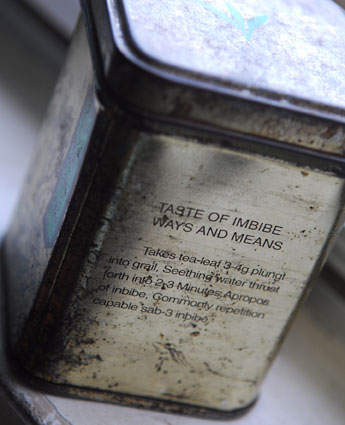The ride out of Lijiang skirts round Yulong Xueshan mountain, which flits in and out of view through a tree-lined road flush with autumnal bloom. Our tent, winter kit and one of the Extrawheel trailers are on their way home, so now we can travel light and cover bigger distances – today we didn’t leave until 2pm, yet still make it to Jianchuan, over 70km away. But losing our porta-home means there’s more pressure to reach a town or village, and track down a cheap hotel or guesthouse to lay our heads for the night.
In Jianchuan we finally get lucky. Initially, everyone insists on pointing us to swish, upmarket hotels – well, upmarket by our lowly standards. But after some perseverance, a receptionist shyly points us to the hotel’s adjoining ‘cheapo’ wing, where a decent room with a perfectly clean shared bathroom sets us back 30Y – just two pounds. A trucker’s room, by the looks of things, and more our style…
I like places like Jinchuan. There’s nothing really to see. Just another town in the midst of development and modernisation. A busy main drag, a string of hardware stores and a dozen restaurants. But it feels real, and local, unlike many of the tourist-geared towns that are popping up around Yunnan. In the morning, we grab fruit from the market and baozi from a street corner – the right corner it seems, as all the bus drivers and truckers hop out of their cabs to grab their breakfast. Then we spot a shop selling wicker goods. I’ve been hankering over the simple baskets seen all over China for ages. Tied with straps and worn like rucksacks, they’re used to carry everything from chestnuts to rocks to vegetables to laundry. We buy two and I hang them on my rack like panniers, as the locals do, to nods of approval. We’ll post them from the next town – they’ll be great for shopping back home, and with their little feet, they’ll make cool magazine stands too (-:
The road is relatively flat, give or take a couple of small passes, and lush and green compared to the mountains we’ve left behind. The land is rich and fertile, and to either side, people are busy working their plots and fields. There’s a noticeable range of ages – the whole family is out, young and old, sowing seeds, tending cabbages, picking rice. People here are different too; most are Bai, the main ethnic minority. The women wear indigo blue clothes that are dyed locally, their faces darker, their round foreheads peeping out from under broad rimmed wicker hats. The older folk are stooped and tiny, stunted by years of lugging huge loads over their small frames.
One of the great perks of cycling touring is that you can never eat too much. Food is literally fuel, and just as we’re looking out for a lunch spot, we notice a sudden spike in basket-carrying villagers. Hm, they’re all empty on one side of the road, and overflowing with fresh produce on the other. A market must be close by! Sure enough, within a couple of kilometres, the streets are heaving with produce, spilling out in great mounds along the road. While the old highway we’ve been following isn’t too busy for the most part, the traffic quickly clogs up and grounds to a halt – only concerted honking reluctantly clears a path through.
I love markets. Everything is laid out to be scrutinized and haggled over: noodles bound like balls of string, chunks of fresh meat, baskets of tangerines, hession sacks of tea leaves; some large and crumpled like autumn leaves, others fine and charcoal-grey. We stop at an eatery and park our bikes, away from a scrum of women sifting through bright red chillies. Our movements are closely monitored by the farmer who sits by our side, his rough hands deftly maneuvering his chopsticks round some slippy tofu. Dumpling soup is on the menu, with thin, pork-filled pastry, chives, ginger and flecks of chilli. Delicious.
A last 30km busy drag sends us around Erhai Lake to Dali, past pagodas and Confucian temples tarted up for tourists. Oblivious to the buses that hurtle up and down, fishermen in conical hats and rolled up trousers are out cormurant fishing on its calm waters, and women are heaving out grass to dry on the shores. The influence of this beautiful lake on local life has always been significant – even the traditional embroidered shoes here are curved up at the toes in the shape of a boat. And now there’s tourism to add to the mix too.
Indeed, Dali’s long been a traveller hangout, and was a firm favourite on the trail when I last visited. In the intervening years, the transformation to fully fledged, glossy tourist town has been completed. Completely renevated, or simply reconstructed in ye older style, the ‘ancient’ city of Dali is now a must-see for the big tour groups running the Dali-Lijiang-Shangri-La gauntlet. It’s less grungy than before, catering more to wealthier Chinese tourists than penny pinching backpackers – the traditional red paper lanterns printed with the Budweiser logo are a nice touch.
Our guidebook steers us towards a strip of restaurants that appeal to European whims, where we overhear a contended English tour group lamenting the lack of decent western food elsewhere in China… That evening, we track down a great place for Shepard’s Pie, of all things, and in the morning, Jack’s Cafe provides a belly-filling breakfast of fresh pear juice and poached eggs on toast…
Yes, I know. Who are we to talk!
Stats and Facts:
Lijiang (2400m) to Jianchuan (2200m) – 72km
Jianchuan to Dali (1950m) – 110km
Poached eggs, toast and juice in a ‘western’ restaurant – 12 Yuan (80p)
Trucker’s room – 30 Yuan (2 GBP)
Wicker rucksack basket – 20 Yuan (1.30GBP)
